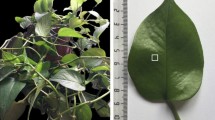Synopsis
The use of polarized light in the quantitation of biological autoradiographs by photometric reflectance microscopy was investigated. Crossed polars greatly reduced the intensity of reflections from various surfaces in the specimen and optical system, including melanin granules, extraneous crystalline deposits and stained cellular material. The signal/noise ratio of measurements of autoradiographic silver grains was significantly improved with crossed polars, and many previously unusable preparations became measurable. Suitable staining methods included Neutral Red, Haemalum, Methyl Green-Pyronin, New Methylene Blue and the chloroacetate esterase method, but fluorescence from tissues stained with Eosin or Eosin-containing mixtures such as Giemsa was not diminished by the use of polarized light.
A method, involving successive measurements of the reflectance with crossed and parallel polars, is described for quantitating autoradiographs in the presence of material (such as melanin granules) the reflectance of which is incompletely extinguished by crossed polars.
The use of polarized light significantly extends the useful range of the reflectance technique, since an approximately linear relationship between reflectance and absorbance (and hence between reflectance and exposure) is maintained to higher grain densities than with unpolarized light.
Similar content being viewed by others
References
Barsky, V. E., Terskikh, V. V. &Khachaturov, E. N. (1971). Application of microphotometry in reflected light for the quantitative estimation of autoradiographs.Tsitologiya 13, 118.
Dörmer, P. (1972).Microautoradiography and Electron Probe Analysis (ed. U. Lüttge) p. 9. Berlin: Springer-Verlag.
Goldstein, D. J. &Williams, M. A. (1971a). Quantitative autoradiography: an evaluation of visual grain counting, reflectance microscopy, gross absorbance measurements and flying-spot microdensitometry.J. Microsc. (Eng.) 94, 215–39.
Goldstein, D. J. &Williams, M. A. (1971b). Use of polarized light in the quantitative analysis of autoradiographs with the reflectance microscope.Proc. R. microsc. Soc. 6, 142.
Gullberg, J. E. (1957). A new change-over optical system and a direct recording microscope for quantitative autoradiography.Expl. Cell. Res. Suppl. 4, 222–9.
Gullberg, J. E. (1959). Grain counting instrumentation.Lab. Invest. 8, 94–8.
Rogers, A. W. (1961). A simple photometric device for the quantitation of silver grains in autoradiographs of tissue sections.Expl. Cell Res. 24, 228–39.
Rogers, A. W. (1967).Techniques of autoradiography. Amsterdam: Elsevier.
Rogers, A. W. (1972). Photometric measurement of grain density of autoradiographs.J. Microsc. (Eng.) 96, 141–54.
Stevens, G. W. W. (1965). The blackness of developed silver.J. Photographic Sci. 13, 228–31.
Author information
Authors and Affiliations
Rights and permissions
About this article
Cite this article
Goldstein, D.J., Williams, M.A. Quantitative assessment of autoradiographs by photometric reflectance microscopy. An improved method using polarized light. Histochem J 6, 223–230 (1974). https://doi.org/10.1007/BF01011810
Received:
Issue Date:
DOI: https://doi.org/10.1007/BF01011810




